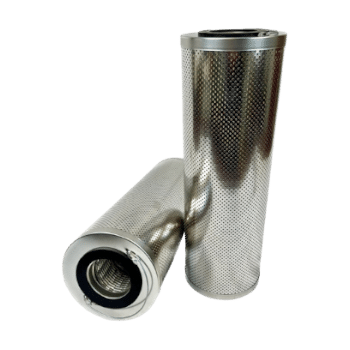Sodick AP200 Sinker Machine Filter Replacement
$28.70
This ISO Filtration EDM filter is a direct replacement for the Sodick AP200 EDM machine filter in form, fit, and function. The optimized filter media provides fine filtration, long life, and high dirt-holding capacity.
- Made in America for assured performance
- Quality ISO 9001:2015 compliant manufacturing
- High-performance filter media tested to ISO 16889 protocols
LIVE UPS or LTL rates calculated on the checkout page

Specs
| O.D. | 6.0" |
|---|---|
| I.D. Top | 2.125" |
| I.D. Bottom | 2.125" |
| Length Overall | 18.0" |
| Construction Type | Optimized Resin-Impregnated Cellulose |
| Efficiency | 5 Micron |
| Gasket Material | Buna |
| Wire Support | NA |
| Max Operating Pressure | NA |
| Max Temp | NA |
| Weight Each | 4.5 |
| Carton Qty | 6 |
| Condition | New |
The Role of ISO Filtration’s Sodick AP200 Replacement EDM Filter
Our Sodick AP200 replacement EDM filter is a guaranteed direct replacement in form, fit, and function. This means the filter will fit and you should expect performance to be equal to or greater than the OEM filter. Made in America.
Filtration Media for the Sodick AP200 direct interchange
Our filter media is backed by ISO 16889 multi-pass testing and other ISO/SAE test protocols and the filter is produced in an Quality Controlled manufacturing facility. Our manufacturing facility is all about quality control, consistency, responsibility, and being true to the design. Optimized resin-impregnated cellulose media is used for excellent filtration, just like the Sodick AP200 filter to be replaced.
Optimized Media
Our filters use the optimal amount of media and pleats to ensure high dirt-holding capacity. The correct number and design of pleats in the element will give you the lowest initial pressure drop. Therefore the filter will take longer to reach its change-out pressure drop which is usually 25 PSID.
Micron Rating for the Sodick AP200 cross
This Sodick AP200 EDM filter replacement element is rated Efficiency nominal. The filter performance is outstanding.
Visit the links below for more helpful information.
Our hydraulic filter is indicated as a replacement for Sodick AP200 and is not manufactured by or affiliated with the OEM or Brand listed. Part numbers and names are used for cross reference only. The element may vary from the image displayed on the left.






